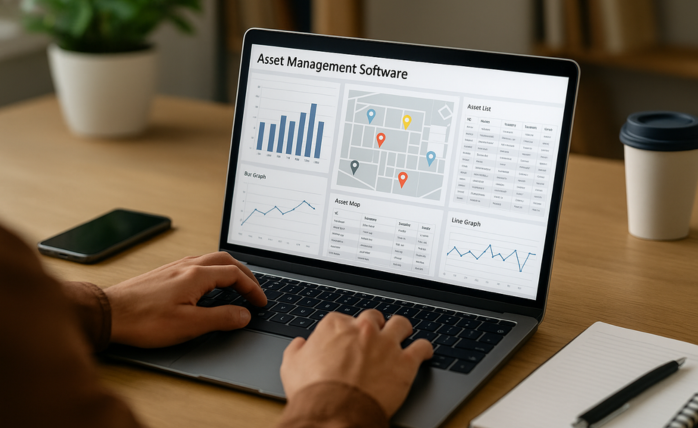Entrepreneurs
How Your Business Can Outmaneuver Your Competitors by 85%
Did you know that companies that master big data can outmaneuver competitors by 85% in sales

Did you know that companies that master big data can outmaneuver competitors by 85% in sales and more than 25% in gross margins? Sounds inspiring, right? But the thing is that data alone isn’t enough. Rather, it’s the strategy behind it that unlocks these enviable boosts. So, this article explores how to make the most out of your big data and build a strategy that’s functional and competitive.
What’s a Big Data Strategy and Why Do You Need It?
As the name implies, a big data strategy is a plan for handling enormous sets of input. To build it, you craft a blueprint that aligns the intelligence with your business objectives. The key purpose here is to make the former work for you and drive meaningful change with its help. This strategy usually involves
- deciding on the exact type of input you need,
- determining the insights you aim to extract from it,
- and formulating how these insights will be transformed into actions.
As you may see, the process isn’t an easy one. This is why many businesses choose to work together with a big data strategy consulting agency. The key reason for this is that the scope and depth of big data can be overwhelming. A seasoned consultant, in turn, brings expertise in intelligence plus experience in industry-specific strategies. They help to comply with complex regulations, integrate advanced technologies, and establish a data-centric culture within your organization.
How to Build a Big Data Strategy
Step 1: Define Your Objectives
Clarify what you intend to achieve with your strategy. Objectives should be as specific as possible. Just as an example, you could target
- reducing customer churn by 10%,
- increasing market penetration in a particular segment by 15%,
- or enhancing operational efficiency by reducing process time by 20%.
These precise goals will guide the technological and methodological aspects of your strategy.
Tip: Use SMART criteria to refine your objectives. That is, check whether each objective is specific, measurable, achievable, relevant, and time-bound. This method helps ensure that each initiative is clearly defined and outcomes can be quantified.
Step 2: Establish Governance
Strong governance is your strategy’s backbone. It’s about who accesses what and when, in the first place. Other concerns it covers are the data’s
- accuracy,
- privacy,
- and alignment with business values and compliance standards.
The goal of this setup is to prevent data misuse and ensure its reliability as a decision-making tool.
Tip: Implement a tiered data access model. This means categorizing information based on its sensitivity and assigning access levels accordingly.
Step 3: Integrate Data Sources
Information lives everywhere today — from social media to IoT devices. Integrate these sources into a unified system to get a richer view of your operational landscape.
Tip: Middleware solutions can act as a bridge between different systems. Middleware can help normalize data from various sources, which is crucial for comprehensive analytics.
Step 4: Invest in the Right Technology
Select technologies that can grow and adapt with your ambitions. Some solutions worth considering include
- cloud services,
- advanced analytics software,
- AI.
The right tools will help you to query large sets of input, discover patterns, and predict trends. If you work with a big data consulting service, they’ll bring the tech expertise with them. If not, you’ll need to invest both in the tech as such and in training.
Tip: When selecting technology, conduct a pilot test with a small, controlled pool of information. This minimizes risk and provides a practical glimpse into how the solution will work within your infrastructure.
Step 5: Analyze and Act on Your Insights
Remember that analysis alone isn’t the goal in and of itself. The action is what counts. Use machine learning to predict customer behavior or deploy analytics to identify inefficiencies within your operations. Then, use these insights to drive measurable business outcomes.
Revise your strategies from time to time and adjust them based on real-time feedback.
Tip: Develop a feedback loop where insights from data analytics are routinely checked against real-world outcomes. This is a good way to ensure that your strategies remain robust and relevant.
Step 6: Cultivate a Data-Driven Culture
Ideally, you should strive to create an environment where data-driven decisions are the norm. Train your team to think critically about information and encourage them to experiment with new ideas based on insights.
Tip: Introduce regular data literacy workshops and training sessions. Don’t just say that information is valuable. Show your team how it can benefit them and their work (facilitate their work? reduce errors?). Employees will only share this culture if they acknowledge its value for them personally.
All in all, the beauty of a strong big data strategy is that it can transform huge amounts of raw input into a strategic asset. And with the help of the latter, you can elevate your company’s market position and operational effectiveness.
If you want it to work, integrate detailed planning, rigorous governance, and the right technology. Plus, don’t underestimate professional consulting because mistakes in this field are often costlier than paying for expert services.
Change Your Mindset
The Silent Skill That Makes People Respect You Instantly
What truly earns respect and why most people go about it the wrong way

Everybody craves respect but not everyone earns it. Some people believe that a title, years of experience, or a position of authority automatically entitles them to respect. (more…)
Entrepreneurs
The Essential Skills Every Entrepreneur Needs In 2026
Success in the digital age isn’t about luck. It’s about mastering the skills that separate dreamers from doers.

When I was 22 years old, I started my first side hustle as a ghostwriter. (more…)
Business
The Hidden Money Pit in Your Operations (and How to Use It)
See how smart asset management software is quietly saving businesses thousands in wasted time, stock, and maintenance.

Trimming unnecessary expenses and minimizing resources is a general practice in running a business effectively. Asset management software can help you achieve those goals. (more…)
Business
Thinking of Buying A Business? These 6 Sectors Quietly Produce the Best Deals
Before you buy your next venture, check out the sectors where successful businesses are changing hands every day.

All entrepreneurs have a desire to be the masters behind a successful venture. Buying an established business is a great choice for many. This provides instant access to an established market with existing infrastructure and clients. (more…)




















